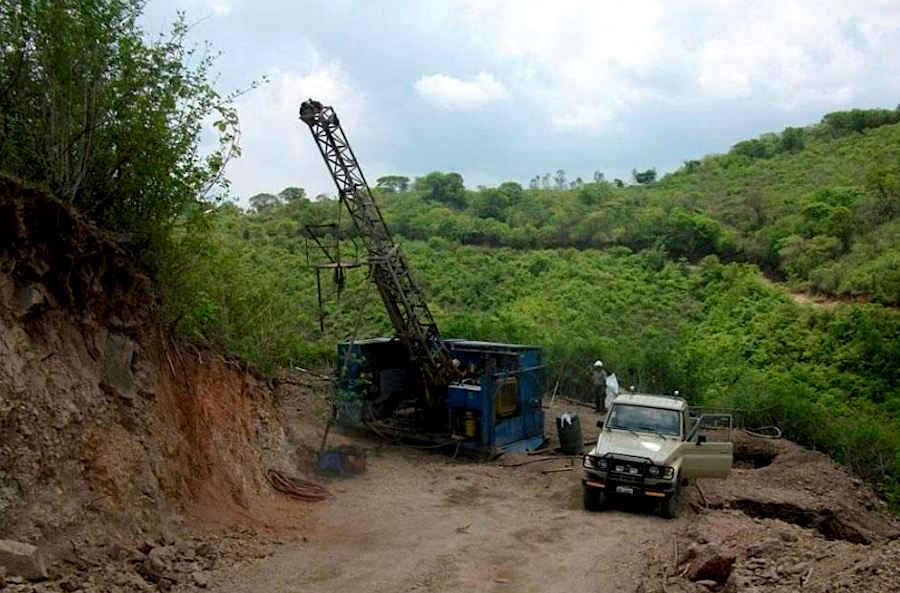Condor Gold shares jump as Nicaragua project grows again

Shares in Condor Gold (LON:CNR) climbed as much as 5.8% on Monday morning after it increased the mineral resource estimate at its 100%-owned La India gold project in Nicaragua, noting the potential for an expansion.
The mineral resource update totalled 9.85 million tonnes at 3.6 grams per tonne of gold for 1.14 million of indicate ounces, a surge of 57,000 ounces from the previous update.
The growth, however, was non-material, and as a result, doesn’t change the mineral reserve referenced in the 2014 pre-feasibility study, Condor Gold said.
The mineral resource proved two new satellite open pit resources, taking the total to four pits.
The revision included 8,222m drilling completed since the previous update in September 2014, and proved two new satellite open pit resources, taking the total to four pits.
The four satellite pits had the potential to act as feeder pits, to provide mineralized material to the permitted plant, and to supplement feed from the main La India open pit, Condor said.
The company highlighted the new open pit resource on Mestiza, which shows 2,000 tonnes at a grade of 12.1g/t for 36,000 ounces contained gold in the indicated category and 341,000 tonnes at a grade of 7.7g/t gold for 85,000 ounces in the inferred category.
Speaking to MINING.com, chief executive officer Mark Child noted that La India open pit was full permitted to produce 600,000 ounces of gold over a six to seven-year period. He added the company was working on an opportunity to enter production in the first half of this year.
The plan is to begin by “mini pit” within the larger, permitted La India open pit and trucking the ore to a nearby processing plant, which has spare capacity. “Condor has firm quotes from local contract mining and haulage companies,” Child said.
“The significance of today’s announcement regarding an updated mineral resource is that in addition to the main permitted La India open pit there are now 4 feeder pits totalling 287,000 ounces of gold,” he told MINING.com.
Condor is working on an opportunity to enter production in the first half of this year by mining a ‘mini pit’ within La India open pit project.
La India also has a total underground resource of 1.27 million tonnes at a grade of 5.8g/t gold for 238,000 gold ounces in the indicated category and 5.47 million tonnes at a grade of 5.1g/t gold for 889,000 ounces gold in the inferred category.
Child said the upgrade was a “timely reminder of the high-grade nature” of the La India gold deposit.
He added that Condor would be looking at adding the satellite pits’ contained gold to the mine schedule to supplement the ore feed from the La India open pit.
“This has the possibility to either increase annual production and/or extend the life of mine,” he said.
Referring to the country’s stability, Child said that while Nicaragua was hit last year by the biggest street protests it had seen since the civil war ended in 1990, those were focused mostly in the capital Managua and other large cities.
“The La India Project is in a former mining town in the countryside, some 2.5 hour drive from the capital. The local community overwhelmingly supports the construction of a new mine, 700 people have applied for jobs at it, which will breath economic life into a poor community,” Child said.
Nicaragua’s gold production is supplemented by small scale artisanal mining of placer and alluvial placer gold, particularly in the regions that form what is known as the “mining triangle”: Siuna, Rosita and Bonanza, where small-scale gold extraction has been the dominant trade since 1880.
He added that the country has been politically stable for about six months, a time during which the government has been permitting mines, granting new concessions and issuing drill permits.
Mining companies, on the other hand, have carried out business as usual. Canada’s B2Gold, which has two producing mines in Nicaragua, recently announced it was investing $54 million in the country this year. Australia’s Oro Verde, in turn, recently completed surface trenching at its the Topacio gold project.
Condor Gold’s shares gained 1.48p to 26.98p by 8:15 am on the news, but dipped later and were trading at 26.35p by noon London time. Year-to-date, the stock has lost about 15% of its value.
More News
Nornickel believes 2026 will bring dividends, CEO says
Nornickel did not pay full-year dividends for 2022, 2023 and 2024.
December 27, 2025 | 07:42 am
{{ commodity.name }}
{{ post.title }}
{{ post.date }}




Comments